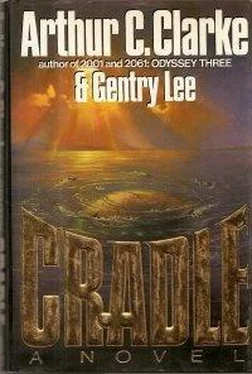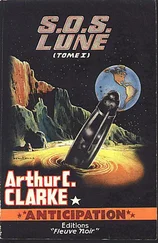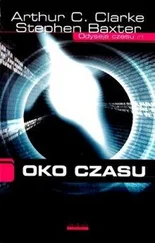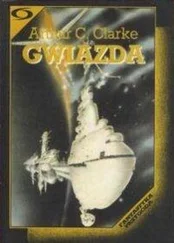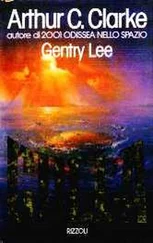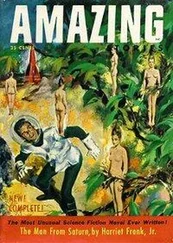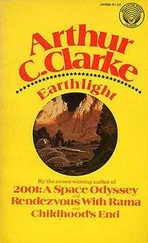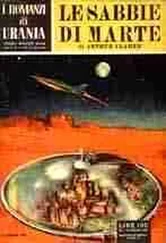Arthur Clarke - Cradle
Здесь есть возможность читать онлайн «Arthur Clarke - Cradle» весь текст электронной книги совершенно бесплатно (целиком полную версию без сокращений). В некоторых случаях можно слушать аудио, скачать через торрент в формате fb2 и присутствует краткое содержание. Год выпуска: 1988, ISBN: 1988, Издательство: Warner Books, Жанр: Фантастика и фэнтези, на английском языке. Описание произведения, (предисловие) а так же отзывы посетителей доступны на портале библиотеки ЛибКат.
- Название:Cradle
- Автор:
- Издательство:Warner Books
- Жанр:
- Год:1988
- ISBN:0-446-51379-2
- Рейтинг книги:4 / 5. Голосов: 1
-
Избранное:Добавить в избранное
- Отзывы:
-
Ваша оценка:
- 80
- 1
- 2
- 3
- 4
- 5
Cradle: краткое содержание, описание и аннотация
Предлагаем к чтению аннотацию, описание, краткое содержание или предисловие (зависит от того, что написал сам автор книги «Cradle»). Если вы не нашли необходимую информацию о книге — напишите в комментариях, мы постараемся отыскать её.
Cradle — читать онлайн бесплатно полную книгу (весь текст) целиком
Ниже представлен текст книги, разбитый по страницам. Система сохранения места последней прочитанной страницы, позволяет с удобством читать онлайн бесплатно книгу «Cradle», без необходимости каждый раз заново искать на чём Вы остановились. Поставьте закладку, и сможете в любой момент перейти на страницу, на которой закончили чтение.
Интервал:
Закладка:
Now, one at a time, these springs are harvested by small instruments inside the spongy outer section of the pellet and then loaded in carriers that are electrically fired toward the central cavity of the pellet. Within that cavity sits a single black, amorphous spot, its exterior constantly changing shape as its opaque material shifts around to follow unknown stimuli. This spot is surrounded by a yellow goo that fills the remainder of the cavity.
The first spring slips out of its carrier, then locates and penetrates the spot. The spring can be seen for an instant moving toward the center. However, it is broken up and destroyed within milliseconds. Other springs are fired into the cavity at regular intervals and all try, after penetration, to reach some special region in the spot. Finally one of the procession succeeds and the spot changes color to bright red. In rapid succession, some enzyme in the spongy outer section of the pellet is dumped into the yellow goo, turning its color a little toward green, and all the rest of the springs disappear, apparently absorbed by the pellet structure. The entire pellet itself next elongates and extends a miniature propulsion system into the emerald liquid. After carefully steering around the many hazards, it then joins the queue of fertilized pellets moving, one by one, through a round diaphanous membrane in the bottom of the beaker.
The fluid dense with pellets speeds along a narrow tube until it reaches a partially closed container approximately the size of the beaker. Inside this translucent jar, a mechanical, spoonlike object digs into the stream of liquid flowing through and plucks out the pellets. They are lifted up and then suspended momentarily around the passing fluid in a heavy gas enclosed by the jar. Within moments each of the pellets splits and their carapaces apparently dissolve, leaving visible inside the jar an array of the little red spots surrounded by the off-yellow goo and suspended in an invisible gas.
The goo extends itself slowly throughout the jar above the flowing fluid until all the open areas between the red spots are filled. When the emerald stream below drops to a trickle and then disappears altogether, the goo hardens into a gelatin and fills the ports where the fluid once entered and departed. Within the jar are several thousand red spots embedded in the yellow-green gelatin. The spots undergo no visible change throughout this process.
Time passes. Activity in the jar ceases. Occasionally mechanical probes to test the stability of the gelatin are inserted into the jar at the old fluid ports. At last the translucent jar is removed from its storage location by what looks like a robotic forklift. It is placed on a moving belt that now carries it, along with several dozen other jars containing different kinds of objects (blue pencils, purple stars, and red boxes can all be seen) also suspended in yellow-green gelatin, to a vast circular oven almost an inch in diameter. Here all the jars are carefully baked together. Inside the oven, the molecules of the jar material immediately evaporate. Next a pair of disembodied manipulator hands wrap an incredibly thin blanket of connective filaments around all the gelatinous structures. After some time this ensemble unit is then pulled automatically out of the oven and packaged inside a gold metallic envelope whose several layers are designed to provide all the remaining environmental protection.
The hypergolic propellants mix and burst instantly into flame, pouring fire out the rocket nozzle. The slender vehicle rises, slowly at first, but later with astonishing speed. Before reaching the zenith of its flight, the rocket stage underneath the strange paraboloid payload falls away and tiny motors ignite on the underside of the flying boomerang. At the apex of the trajectory, the entire package suddenly explodes and apparently disintegrates. Hundreds of pieces of the original payload fall toward the surface of the planet in seemingly random directions.
Closer inspection reveals that each individual piece resulting from the explosion is made of a gold metallic material encased in plastic. A small sensor/propulsion package is attached to the plastic; it supplies needed vernier corrections during the descent after the controlled explosion. The plastic debris falls upon a strange, hybrid planet, obviously artificial judging by the wide variety of incongruous surfaces and cloud groupings that can be recognized from an altitude of tens of miles. There are scattered liquid lakes of different hues plus discontinuous surface topography with regions of desert and grasslands as well as barren mountains and canyons. A connected quarter of the planet is covered with clouds. The clouds are here white and fleecy, there brown and thick. Some of the clouds are active, building and changing with hints of turbulence. Other parts of the cloudy region are static, small wisps of white stretching without change across the sky.
One of the plastic vehicles plunges through a misty blue cloudbank into an emerald sea. The plastic is left on the surface, but the encased gold metallic object sinks thirty feet to the floor of the ocean. For a day or two there is no discernible change in its appearance. Then a protrusion begins to form in its north polar region, on the top of the golden sphere as it sits on the ocean floor. The growth expands slowly, until the spherical shape appears to have a large carbuncle on its top. A metamorphosis now takes place. On the outside of the protrusion, the hard metal surface softens and begins to resemble an organic membrane. Although the membrane is thick and dense, it occasionally bulges, suggesting some motion on the other side of its golden barrier.
Eventually a thin black rod, a probe of some kind, thrusts through the surface into the emerald ocean. A second probe becomes visible, then a third, both long black rods like the first one, but each equipped with strikingly different apparatus scattered along the length of the rod. Something larger pushes against the membrane, once, twice, then finally breaking through. What a strange contraption! It’s an aerodynamic shape about three inches long, in two separate segments with a joint between them. The forebody is a nosecone; the afterbody is long and slender and tapers to a point. In addition to the three probes on the front of its forebody, it has four other furlable appendages or arms, two connected to the side of each segment.
It swims over to a nearby underwater plant with its arms stored next to its smooth body. There it unfurls the multi-faceted appendages and begins to examine the plant. An astonishing array of tiny instruments studies the plant for a few moments and then the entity moves away. The same procedure is repeated with each plant encountered. Eventually the thing finds a plant that it “likes” and its pincers remove a major leaf. The leaf is neatly folded into a smaller volume and is then carried back to the object with the golden membrane.
The strange forager is joined by a partner, a carbon copy of itself, and by two fat fish with multiple arms and legs. The latter pair scuttle off to the side and begin modifying the ocean floor. Days pass. The things with the probes work ceaselessly, bringing more and more varieties of plant and animal life back to the home base. The legged fish meanwhile have constructed, out of available sand, rocks, shells, and living creatures, almost a thousand tiny, sealed rectangular homes on the ocean floor. These fish entities too work without break. Their next task is to transport each of the red spots, one at a time, from the golden cradle to their new houses.
If a microscope were available, it would show that some structure was already developing inside the red spots, giving them definition and distinction, by the time of their initial transport. But they are still very, very small. Once the red spots and their gelatin protection are carefully implanted inside their tiny houses, the foragers make routine stops on each trip to deposit a portion of their harvest. At the same time, the fish with legs, the architects and builders of the rectangular houses, begin working on transparent, igloolike homes for the embryos of another species.
Читать дальшеИнтервал:
Закладка:
Похожие книги на «Cradle»
Представляем Вашему вниманию похожие книги на «Cradle» списком для выбора. Мы отобрали схожую по названию и смыслу литературу в надежде предоставить читателям больше вариантов отыскать новые, интересные, ещё непрочитанные произведения.
Обсуждение, отзывы о книге «Cradle» и просто собственные мнения читателей. Оставьте ваши комментарии, напишите, что Вы думаете о произведении, его смысле или главных героях. Укажите что конкретно понравилось, а что нет, и почему Вы так считаете.
